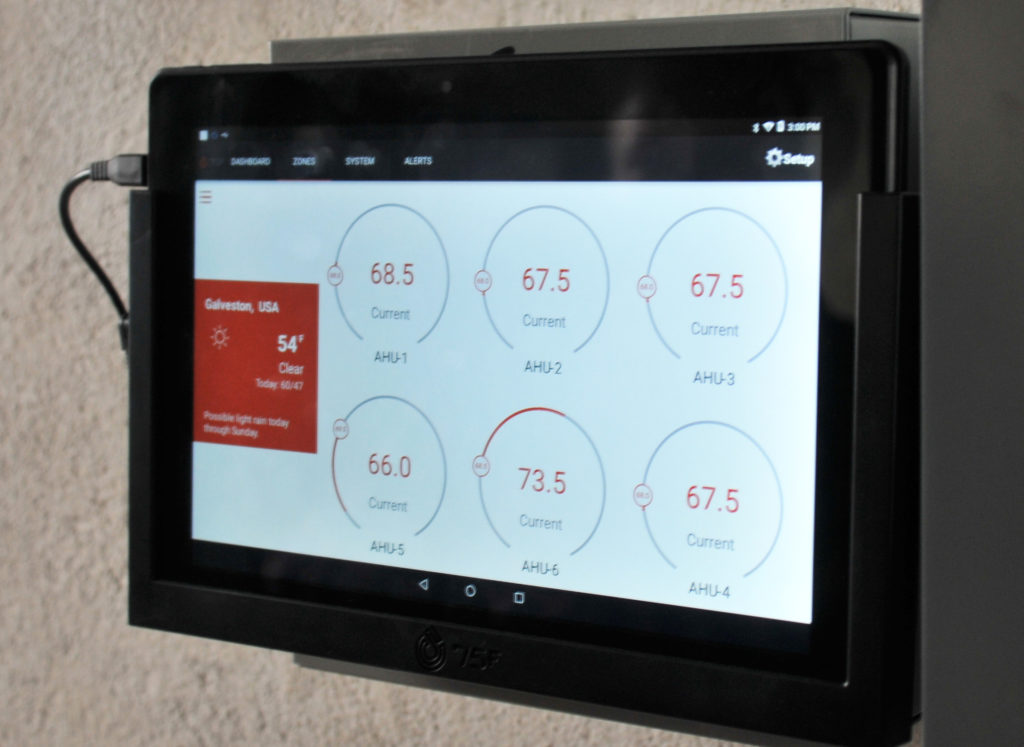Resilience Treatments & Strategies
Building Services (MEP)

Description
Comprised of mechanical systems (often including heating, ventilation, and air-conditioning, or HVAC), electrical systems, plumbing systems, fire protection systems, and conveying systems (moving people or objects, typically via elevators). Most buildings will have several services, but your building may not have or need all of them. Services require frequent maintenance and can easily become outdated with modern code requirements (some will need periodic inspection, depending on the jurisdiction).
Typical risk factor of this component:
Moderate
Each building service (mechanical, electrical, plumbing, and fire suppression systems) by itself typically has little impact on the structural integrity of the building and its assemblies in daily use. However, they are typically necessary for human comfort, and fire suppression systems are especially important in emergency situations.
Typical Damages from Floods or Hurricanes
- HVAC air handler unit, intakes, or ductwork inundated by floodwater, possibly impairing or destroying functionality and warranty and being out of commission when the building needs to be aired out
- Exposed wiring becomes an electric shock hazard in a flood situation
- Plumbing backflows, potentially contaminating occupied spaces with toxic waste
- Blocked or ruptured pipes can cause localized flooding
Other common conditions contributing to vulnerability towards floods or hurricanes
- Lack of fire detection and notification systems
- Lack of fire suppression systems (beyond handheld extinguishers)
- HVAC system outdated or undersized
- HVAC system in a location likely to be inundated (e.g., ductwork embedded in floor slab, AHU at grade)
- HVAC system creating excessively positive or negative pressure of interior space, potentially causing moisture to condense within the wall assembly
- Lack of ability to monitor indoor air conditions
- Lack of emergency power
- Electric systems that are not up to code (e.g., knob-and-tube wiring)
- Plumbing components (beyond faucets) exposed and uninsulated (e.g., in open crawl space)
- Abandoned plumbing or ductwork that is unsealed may facilitate water entry
Resilience Treatments and Strategies
In-house
Train key personnel how and when to shut off each building system.
Regularly test and inspect fire detection and suppression equipment.
Permanently seal or remove abandoned ductwork or plumbing.
Insulate exposed plumbing pipes.
Monitor building systems, including remotely if possible.
Keep a portable generator and fuel for minor emergency uses.
Create/keep an annual maintenance contract with a specialty provider or otherwise exercise proper care and routine upkeep.
Professional needed [type]
Design, size, and specify new systems or upgrade existing building systems (see also NPS Preservation Briefs #3 and #24) [engineer].
Install plumbing backflow prevention devices [engineer].
Install emergency generator sufficiently sized to power essential building systems or disaster response equipment [engineer].
Conduct a blower door test to ascertain the building envelope tightness and reveal the leakages within the building [specialist trade].
Building Services (MEP)

Description
Comprised of mechanical systems (often including heating, ventilation, and air-conditioning, or HVAC), electrical systems, plumbing systems, fire protection systems, and conveying systems (moving people or objects, typically via elevators). Most buildings will have several services, but your building may not have or need all of them. Services require frequent maintenance and can easily become outdated with modern code requirements (some will need periodic inspection, depending on the jurisdiction).
Typical risk factor of this component:
Moderate
Each building service (mechanical, electrical, plumbing, and fire suppression systems) by itself typically has little impact on the structural integrity of the building and its assemblies in daily use. However, they are typically necessary for human comfort, and fire suppression systems are especially important in emergency situations.
Typical Damages from Floods or Hurricanes
- HVAC air handler unit, intakes, or ductwork inundated by floodwater, possibly impairing or destroying functionality and warranty and being out of commission when the building needs to be aired out
- Exposed wiring becomes an electric shock hazard in a flood situation
- Plumbing backflows, potentially contaminating occupied spaces with toxic waste
- Blocked or ruptured pipes can cause localized flooding
Other common conditions contributing to vulnerability towards floods or hurricanes
- Lack of fire detection and notification systems
- Lack of fire suppression systems (beyond handheld extinguishers)
- HVAC system outdated or undersized
- HVAC system in a location likely to be inundated (e.g., ductwork embedded in floor slab, AHU at grade)
- HVAC system creating excessively positive or negative pressure of interior space, potentially causing moisture to condense within the wall assembly
- Lack of ability to monitor indoor air conditions
- Lack of emergency power
- Electric systems that are not up to code (e.g., knob-and-tube wiring)
- Plumbing components (beyond faucets) exposed and uninsulated (e.g., in open crawl space)
- Abandoned plumbing or ductwork that is unsealed may facilitate water entry
Resilience Treatments and Strategies
In-house
Train key personnel how and when to shut off each building system.
Regularly test and inspect fire detection and suppression equipment.
Permanently seal or remove abandoned ductwork or plumbing.
Insulate exposed plumbing pipes.
Monitor building systems, including remotely if possible.
Keep a portable generator and fuel for minor emergency uses.
Create/keep an annual maintenance contract with a specialty provider or otherwise exercise proper care and routine upkeep.
Professional needed [type]
Design, size, and specify new systems or upgrade existing building systems (see also NPS Preservation Briefs #3 and #24) [engineer].
Install plumbing backflow prevention devices [engineer].
Install emergency generator sufficiently sized to power essential building systems or disaster response equipment [engineer].
Conduct a blower door test to ascertain the building envelope tightness and reveal the leakages within the building [specialist trade].